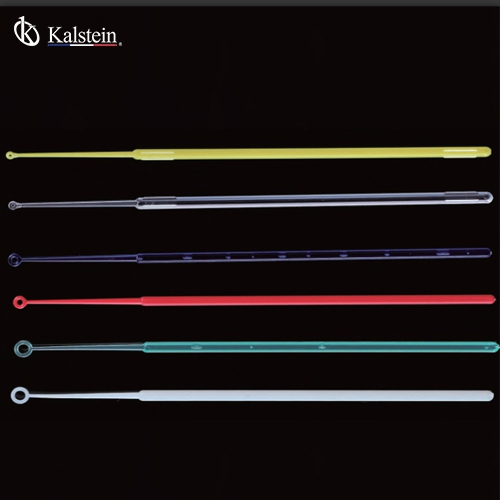Sample testing and microbiology labs require having inoculating loops in order to be able to transfer microscopic microorganisms. This is a common tool between microbiologists. In the medical field, loops are also known as smear loop, inoculation wand or microstreaker. This tool is a fundamental item when it comes to working with cultures. Cultivation of microbes on plates and then transferring them is also another important loops application.
Loops are formed with a wire with a very small diameter, depending on the model. There are several tip materials such as platinum, tungsten or nichrome. The sterilization method for loops is by flaming it or with another heat source until it becomes hot before and after each use. You can repeat this action with the same loop in different experiments and you will not need to worry about cross-contamination. You should know that after flame sterilization, you need to cool down the loop so that the next cells that touches the loop will not get killed by the hot metal.
Inoculating loops
The loops remove a consistent amount of the liquid suspended inoculum by using the surface tension. These loops come in different materials. One of them is ABS material, which is a polymerizing styrene and acrylonitrile terpolymer. These features make the loops rigid. The other type of loop is flexible, because it is a polypropylene loop, which is a thermoplastic polymer that is resistant to many chemical solvents, bases and acids. Polypropylene’s melting point is 130 degrees Celsius.
One of the great features of these items is that they are sterile and disposable, so that eliminates the risk of cross contamination. The smooth surface on the loop allows easy streaking. You should also know that the loops do not have rough plastic edges, flashing or burrs on the head. Loops do not cut or gouge the agar. The hexagonal loop shaft improves grip, assists orientation and makes diluting and streaking very easy. You can choose between rigid or flexible loops to different applications and preferences.
Medical loops
The looped end is useful for obtaining bacterial samples from colonies growing on media plates or from liquid media, as the loop can hold a drop of liquid, somewhat like a bubble wand holds liquid soap. There are disposable devices used to transfer bacterial samples, such as sterile swabs and even sterilized toothpicks. The advantage of an inoculation loop is that the instrument can be used and sterilized repeatedly, reducing the amount of contaminated lab waste generated.
After the inoculation wand is sterilized and given a moment to cool, the wire end with the loop is gently touched to a bacterial colony on a source plate, or dipped into a test tube of liquid inoculate, and then that sample is smeared onto a new sterile plate, typically using streak plate technique. The freshly inoculated plate is then incubated for at least 24 hours, after which time many types of bacterial colonies should be visible.
In transferring bacteria procedures, it is important that the bacterial sample not become contaminated with bacteria from the surrounding environment. This is why media plates are sterile prior to being inoculated with a sample. The instrument used to transfer bacteria must also initially be sterile, before the bacterial sample is obtained. The entire process of trying to reduce contamination of materials used in microbiology is called practicing sterile or aseptic technique.
You can find different kinds of Loops in our catalog. HERE

